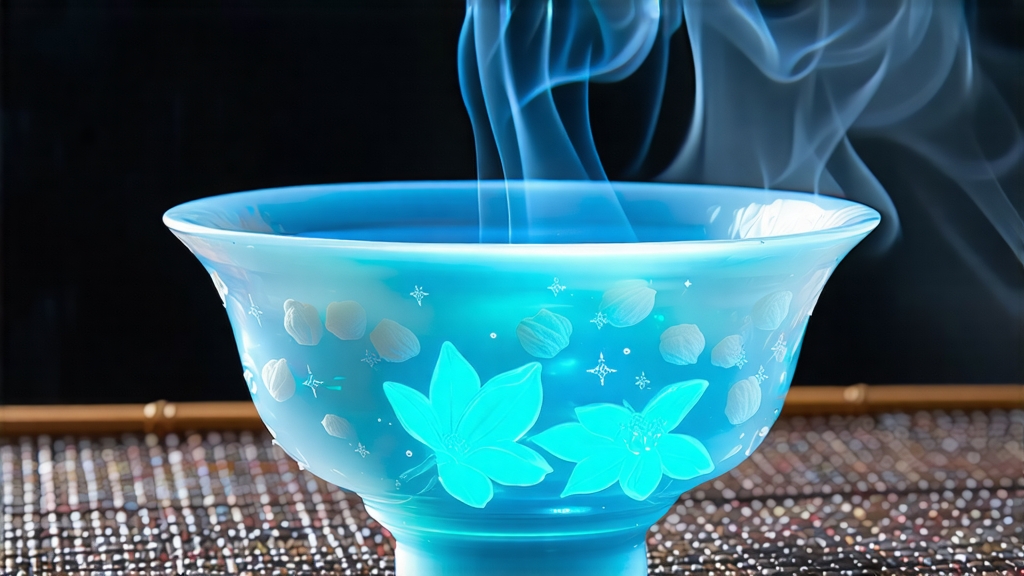
Bai Hao Yin Zhen—“Silver Needle”—is the whispered secret of Chinese white tea, a style so refined that every sip feels like drinking liquid moonlight. To international drinkers accustomed to the smoky punch of Lapsang Souchong or the brassy tannins of Assam, Yin Zhen offers a radically different contract with the senses: no fire, no roll, no shout—only the gentle surrender of a single bud to time and air. Yet within that surrender lies a spectrum of flavor that can rival the most complex Burgundy, a lesson in how restraint can be the ultimate virtuosity.
History: from imperial elixir to garden poetry
The first written record of “white tea” appears in Song-dynasty treatises (960-1279 CE), but those texts refer to the Song court’s habit of whisking powdered white-downy buds into frothy bowls—more matcha ancestor than modern leaf tea. The Yin Zhen we recognize today was born during the late Ming and early Qing in the coastal mountains of northern Fujian, where the tiny native Da Bai cultivar produced buds so plump they looked like pearls dipped in hoarfrost. Legend claims that only virgins with golden scissors were allowed to harvest them for the emperor; while the detail is romantic embroidery, it captures the aura of purity that still clings to the tea. By the 1890s, Fuding county merchants had perfected the sun-withering technique and began exporting the buds to Europe, where Victorian physicians prescribed them for “nervous exhaustion.” In the twentieth century, Yin Zhen survived wars, collectivization, and the rise of teabags, only to re-emerge in the 1990s as the crown jewel of China’s newly revived white-tea renaissance.
Terroir: why Fuding tastes like morning mist
Authentic Yin Zhen comes from two protected micro-zones: Fuding and Zhenghe, both within Fujian’s Ningde prefecture. The region’s granitic soils drain quickly, forcing the Da Bai bushes to send sugars upward into nascent buds; the East China Sea, only 30 km away, wraps the gardens in a humid maritime fog that slows photosynthesis and concentrates amino acids. The result is a bud whose downy hairs—visible under a loupe as tiny crystalline spikes—contain a reservoir of L-theanine and volatile terpenes that later translate into the tea’s signature “cooling sweetness” and faint cucumber note. Above 500 m elevation, the spring temperature curve is gentle: 18 °C at dawn, 24 °C by noon, 16 °C after dusk. That diurnal swing is critical; it allows the leaf to respire during the day yet retain aromatics at night, a rhythm that no greenhouse in Yunnan or India has managed to replicate convincingly.
Harvest calendar: five days that decide the year
Yin Zhen is picked only in early spring, typically between 15 March and 20 April, when the bud reaches 2.5–3 cm but has not yet unfurled into a leaf. Experienced pluckers use a “twist-lift” motion that snaps the bud off at the axil without squeezing sap; each kilo of finished tea requires roughly 30,000 buds, all gathered before 10 a.m. while dew is still present. The dew functions as a natural protective film, preventing oxidation enzymes from activating too soon. After picking, the buds are transported in shallow bamboo trays lined with banana leaves—never plastic—to keep them alive yet cool. If the ambient temperature exceeds 25 °C, the entire harvest can collapse into sour fruitiness within two hours, a humbling reminder that white tea is closer to fresh seafood than to durable black tea.
Craft: the art of doing almost nothing
Unlike green tea, which is pan-fired to kill enzymes, or oolong, which is bruised to invite partial oxidation, Yin Zhen is simply allowed to wither and dry. Yet within that minimalism are micro-decisions that separate master from novice. The buds are spread one layer thick on bamboo racks positioned under a north-facing roof slit; indirect sunlight filters through, lowering moisture from 75 % to 45 % over 36–48 hours. Every two hours the tea maker gently flips the buds with a feather fan, ensuring even airflow without breaking the hairs. When the bud feels leathery but still cool to the touch, it is moved to a low-temperature charcoal oven (40